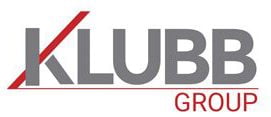The Total Cost of Ownership (TCO) represents a comprehensive assessment of the expenses related to the acquisition, implementation, use, and disposal of a product or equipment.
This concept, also known as the true total cost, encompasses the calculation of total expenses related to a purchase over the product’s entire life cycle. Thus, it provides a more accurate method for assessing an investment’s value — by analyzing cost compared to Return on Investment (ROI) — than merely examining the initial purchase price.
The TCO is determined by summing the initial purchase cost with the operational expenses incurred during the asset’s period of ownership.
Factors that determine TCO
Total Cost of Ownership includes both direct and indirect expenses, as well as certain intangible costs that can be assigned a monetary value. For instance, the TCO of a server may encompass a high purchase price, but indirect costs could include favorable terms on ongoing IT support, and low system management time due to its user-friendly interface.
 The TCO accounts for accumulated costs from purchase to decommissioning.
The TCO accounts for accumulated costs from purchase to decommissioning.
For a data center server, for example, this means the initial acquisition price, repairs, maintenance costs, upgrades, service or support contracts, network integration, security, software licenses, and employee training.
This may even cover the terms of credit on which the business purchased the product. By analysis, a procurement manager might assign a monetary value to intangible costs, such as system management time, electricity used, downtime, insurance, and other overheads.
TCO and challenges
Multiple methodologies and software tools exist for calculating the Total Cost of Ownership (TCO), yet the process is imperfect. Many businesses struggle to adopt a standardized methodology. This is problematic because it prevents them from making purchasing decisions based on consistent information.
Another issue is the difficulty in accurately determining the full extent of operational costs for any given piece of IT equipment; some hidden cost factors, such as depreciation and warranties, are easily overlooked or inaccurately compared from one product to another.
For example, support costs for a server include the price of spare parts. This might make the support cost appear higher than another server but eliminates acquisition costs. Typically, TCO analysis does not predict unpredictable rising costs over time—for instance, if the cost of upgrade parts significantly increases beyond expectations due to a change in suppliers. TCO calculations cannot account for the availability of upgrades and services or the impact of vendor relationships.
Business managers and purchasing decision-makers conduct cost analyses for several options, then compare TCOs to determine overall costs and, ultimately, the lowest long-term cost. For instance, the purchase price or licensing fees of a server might be lower than a competing model, but decision-makers might see that anticipated upgrades and annual service contracts would significantly negate any perceived cost savings.
In turn, the TCO of one model may be slightly higher than that of another model, but its Total Benefits of Ownership (TBO) incentives far outweigh those of the competing offer. Without TCO analysis, businesses could significantly misjudge IT budgets, or purchase servers and other components ill-suited to their IT needs, resulting in slow services, unmanaged downtime, and other issues.
The IPAF’s Total Cost of Ownership calculator
If you’re looking for an efficient way to calculate the total cost of ownership for your aerial work platform or your fleet of aerial work platforms, IPAF has set up a MEWP-specific TCO calculator on its website.
What are the strategies for optimizing Total Cost of Ownership for a MEWP ?
- 75% of the TCO is attributable to the vehicle itself: initial purchase price, total energy consumption, financing expenses, depreciation, and compulsory maintenance costs, among others.
- 20% is linked to operator usage: fuel consumption, repair expenses, etc.
The remainder of the TCO encompasses the diverse internal management tasks of the fleet.
Selecting the appropriate vehicle platform
Identify the vehicle-mounted aerial work platforms that most closely match the operators’ needs based on their application, opting for models that are both cost-effective and low in energy consumption. However, a cost-effective model does not imply a low-quality model. Indeed, a newer, more efficient model that consumes less fuel may be more costly upfront but more economical in the long run (fuel consumption accounts for an average of 15% of the TCO).
Comprehensive contract
After the acquisition cost of the products is negotiated and they are made available to operators, it is crucial to account for additional expenses, such as maintenance and repairs. For aerial work platforms, a periodic general inspection (loler) is mandatory every six months in countries like France, for example. Thus, selecting a service provider that can incorporate these services into the contract and negotiate overall costs for better transparency is vital. Additionally, product delivery logistics should be considered to simplify user access to the products promptly.
Promoting the contract
To ensure all company locations or branches select from the negotiated product list, promoting the new contract is essential. Some effective strategies include:
- Implementing demonstration sessions in key facilities
- Initiating an awareness campaign for site managers
- Launching a comprehensive information campaign: emails, personalized catalogs showcasing the offerings and services, etc.
These initiatives should be conducted in collaboration with the service provider to encourage the adoption and utilization of the chosen solutions.
Focusing on personnel in TCO optimisation
Proper utilisation of vehicle-mounted aerial work platforms is another key to optimizing TCO. Well-informed employees will maximise machine efficiency and minimize unnecessary repairs.
Furthermore, promoting eco-driving among them can not only enhance fuel economy but also decrease the likelihood of accidents.






